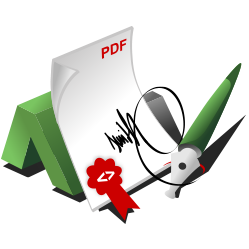Sign With a Visible Signature
This demo shows you how to create a visible signature. Since version 2 the Signer component is shipped with an appearance class that is able to create the appearance in various ways:
We use certificates from GlobalSign for demonstration. If you want to validate the signature in another viewer application, make sure that the root certificate is added as a trusted identity.

